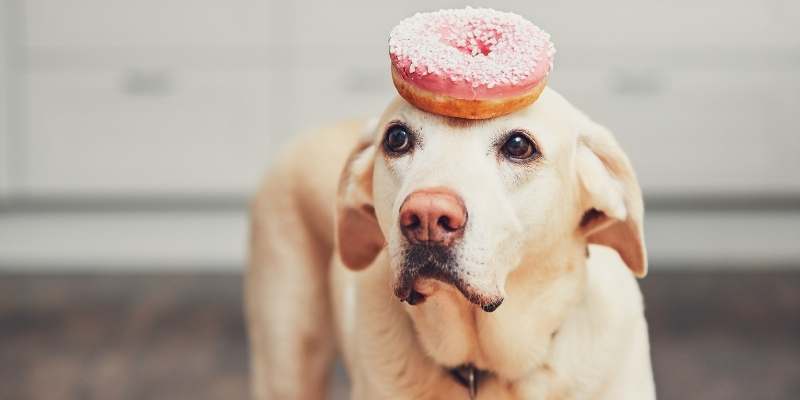Sudden lumps on a dog may appear out of nowhere or grow over time. Having a pet with a lump may be a very stressful experience for pet owners.
Contact your veterinarian if you observe a fast-growing lump, redness, inflammation, or if it is giving your dog discomfort. If you see a bump on your dog’s body, it’s best to have a veterinarian check it out and watch it. When dog owners discover a lump on their canine, their hearts race. It’s a common reaction. But you should take some deep breaths and refrain from making any assumptions about the lump’s cause. If you see sudden lumps on dog, don’t attempt to treat it yourself without consulting a veterinarian.
Pet owners may be alarmed if their pet develops a lump. Still, most lumps are not malignant, so panic is unnecessary. However, most hard immovable lump on dog occur abruptly and are not harmful. Still, there are a few cases in which a vet should be called in. To determine the cause of the lump, a veterinarian will be able to do a physical examination and conduct various tests.
Do you have a specific question about sudden lumps on dogs? Then use the table of contents below to jump to the most relevant section. And you can always go back by clicking on the black arrow in the right bottom corner of the page. Also, please note that some of the links in this article may be affiliate links. For more details, check the Disclosure section at the bottom of the page.
Here's what we'll cover:
Why do sudden lumps on dog occur?
The majority of dog lumps are non-cancerous, meaning they are not malignant. Many different things might cause this sudden lump on the dog’s nose. They could be fatty deposits in the skin or a fatty tumor. In elderly dogs, fatty tumors are prevalent and may cause abrupt lumps on your pet’s body. Fatty tumors are often tender to the touch, although dogs seldom show signs of discomfort from these benign tumors. Lumpy warts don’t need to be treated unless they cause your pet any discomfort or discomfort.
Warts are not hazardous, but they may get infected and cause skin irritation, so it’s vital to watch them and treat them when necessary. Bacterial infection may cause a bacterial abscess, an accumulation of puss inside the body. They generally start as tiny bumps beneath the skin and progress into more severe infections.
What are these lumps on my dog?
That old practice of surfing WebMD to diagnose whether you have cancer or any other awful ailment while feeling unwell is well known. The opposite is also true. The bumps on your dog go unnoticed because you rationalize, “It’s only a lump!” You can’t tell for sure until you see a vet or get some test results, and it’s possible that your thinking is just trying to run away from you.
Many lumps are harmless. However, more than half of dog tumors are either cancerous or malignant. But on the surface, they seem to be the same, and it’s impossible to tell without testing. They aren’t going to go away on their own!
In their middle or later years, you might observe a fatty bleeding lump on the dog around the ribs. However, they may appear elsewhere too. Overweight and giant breeds are more likely to develop sudden fatty lumps on a dog. It is considered a normal part of the aging process. There is a good possibility you do not know what caused a new lump or bump to emerge.
If you are still unsure, make an appointment with your veterinarian so they can check things out and make sure your pet gets the care they need in the future. With this in mind, the veterinarian will carry out a simple surgery to extract a few cells from the lump on the dog’s back near the spine for microscopic examination. Veterinarians can sometimes identify immediately whether or not a lump is nothing more than fat.
A little tissue sample will be sent out for lab work. This test may not provide rapid findings, and the results should be returned within a few days. A simple surgical procedure may typically eliminate cancerous bump on the dogs head and elsewhere. However, radiation, chemotherapy, or both may be necessary if cancer has spread to certain other body regions.
Types of cysts on dogs
Tumors that are benign or non-cancerous are seldom dangerous to pets and don’t need veterinarian treatment. However, the vet may decide to remove them if they become infected, inflamed, ulcerated, or otherwise creating complications for your dog.
Tumors that are too fat
As your pet becomes older, you are more likely to find a lump under the dog’s skin that moves. However, when it comes to fat tumors, big breed dogs and those who are obese have a higher risk of developing them.
Scabies and acne
Blocked sebaceous glands are the cause of your dog’s pimples. Sebaceous cysts frequently break over time, releasing their creamy contents. Therefore, the risk of a subsequent bacterial infection might be increased by popping them. Sebaceous cysts seldom pose a concern for dogs, so they do not need to be removed unless they are diseased.
Hives
When the skin is hypersensitive to allergens like bee stings, hives form. They emerge as red, swollen, and itchy welts in the shape of a circle. Hives may go away on their own or be treated using antihistamines or steroids, depending on their severity.
When should I worry about a lump on my dog?
For many dog owners, seeing dog cancer lumps is cause for concern. Cancer is among the most prevalent causes of all lumps in humans, so it’s no surprise that most people think that lumps on dogs are cancerous. However, keep in mind that dogs may acquire a variety of lumps for various causes. Some of which are genetic and others that represent no significant health danger to your dog.
Despite this, lumps must not be overlooked. It’s always best to be safe than sorry. So if you spotted a hard immovable lump on the dog neck that has appeared over your dog’s body, you should better visit the vet ASAP.
Most cancers and abscesses are rigid, hard lumps that emerge quickly. However, that is not always true for all types of cancer and abscess. Owners are urged to seek their veterinarian’s advice if they see a lump on their pet’s body that they cannot identify on their own. Early discovery of hard movable lump under skin dog and treatment may make a significant difference in their quality of life and even save their lives in certain situations.
Cancerous vs. non-cancerous lump on dog
Cancerous
Some hard lump on the dog’s chest will appear on the dog’s skin, allowing owners to catch the disease in its early stages. Boxers like Boston terriers, in particular, are prone to tumors that develop on the outside of their bodies.
When a hard immovable lump on a dog’s neck is felt, one of the most effective methods to determine whether or not it is malignant is to gauge how hard or soft it is. An immovable lump that is hard and solid to the touch, unlike fatty lipomas, indicates that your dog has a malignant tumor.
Foul-smelling discharge from the mouth, nose, or eyes may also signify that the tumor is malignant in a dog’s neck or face.
A tumor’s cancerous nature cannot be determined simply by looking at it. Even your pet’s doctor will need to perform a biopsy to ascertain whether the tumor is benign or cancerous.
Non-cancerous lump on a dog
A veterinary professional must determine if a tumor is benign (harmless) or malignant (cancerous). The hard immovable lump on the dog’s rib cage comes in different shapes and sizes, from little lumps on the skin to massive growths throughout the animal. If the change is slight and does not affect your dog’s normal behavior, such as how he walks or sits, you may be able to leave it alone.
“Oh, God! I found a lump on my dog” is the typical reaction of many pet owners. So, remember, a non-cancerous lump is more common in overweight or older dogs because of the hairless discolored patches and growths on the skin. But, again, tumors in your dog’s skin or tissue may take many different forms and be produced by a proliferation of cells that is not normal.
Hope this discussion has alleviated some of your concerns and given you a better idea of what to do if you see any lump appearing overnight on a dog at any time. So, keep a close eye on your pet, record any changes, and schedule an appointment with your pet’s veterinarian as soon as you can!
Thanks for the blog graphics: Canva.com

Thanks for the blog graphics: Canva.com
Doghint.com is a participant of several affiliate programs. The list includes (but not limited to) the following: VigLink, Refersion, ShareASale, and Amazon Services LLC Associates Program, an affiliate advertising program designed to provide a mean for us to earn fees by linking to Amazon.com and affiliated sites. Doghint.com does not intend to provide veterinary advice. All published articles are meant for informational purposes only and not substitute the professional veterinary consultation.


